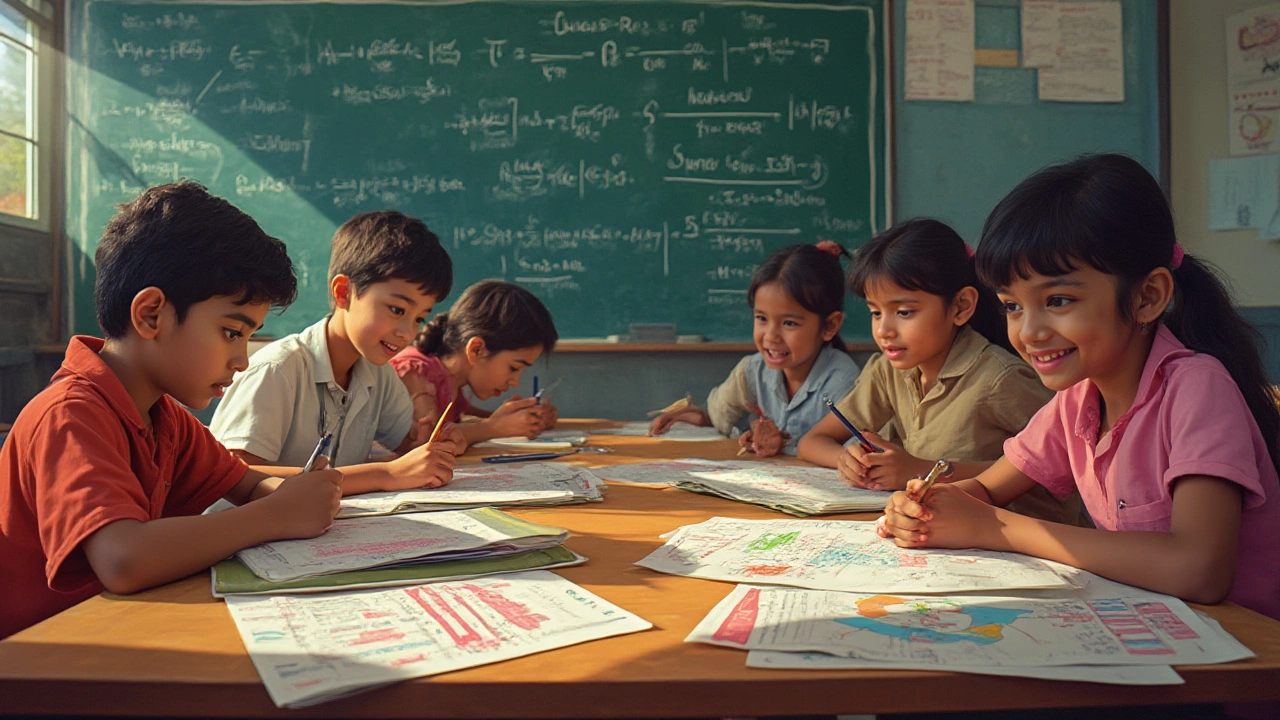Cracking into the Indian Institutes of Technology (IITs) is like chasing a wild beast—they say only the most prepared and persistent catch it. Every year, lakhs of students throw themselves into the Joint Entrance Examination (JEE), but few actually know what the beast is made of. What exactly hides behind the intimidating phrase: IIT syllabus? Sure, you’ve heard it’s about Maths, Physics, and Chemistry. But it’s not just “hard sums” or “tough formulas.” It’s a well-defined universe with its own rules. Anyone serious about grabbing a seat at an IIT needs to know the details—not just to survive, but to thrive.
The Structure of the IIT Syllabus: What’s In and What’s Not
The IIT JEE syllabus is split into two main entrance tests: JEE Main and JEE Advanced. Most students focus their energy on these two. JEE Main is the first gate, while JEE Advanced is the final challenge. Both exams demand knowledge of Physics, Chemistry, and Maths, but JEE Advanced often pushes the boundaries deeper and wider.
First, you have the Common Syllabus for 2025. The National Testing Agency (NTA) sets JEE Main’s syllabus, while JEE Advanced is crafted by IIT faculty. And it’s not just a copy-paste job: the topics, depth, and even some chapters differ, so anyone who preps for both has to keep a sharp eye out.
Take Physics, for example. Both exams cover Mechanics, Electrodynamics, Thermodynamics, Optics, Modern Physics, and Waves. Yet in Advanced, you’ll see trickier questions that combine topics—say, a problem involving both Electrodynamics and Optics. In Chemistry, it’s all there: Physical, Organic, and Inorganic. JEE Advanced sneaks in concepts like qualitative analysis and topics like Chemistry in Everyday Life, which may be lighter or even excluded from Main.
Maths in the JEE is where minds get tested. The Main sticks to what most Indian boards teach: Algebra, Calculus, Trigonometry, Coordinate Geometry, Vectors, and Probability. Advanced? It adds depth—harder calculus, tougher probability, those sneaky “integer-type” questions. You can’t just memorize formulas; you actually have to understand them.
This brings us to a curious fact: JEE Main and Advanced dropped some NCERT board topics during the COVID years, but as of 2025, the full pre-COVID syllabus is back. No shortcuts, no dropped chapters. If you’re aiming IIT, be ready for the marathon, not a sprint.
Physics: Key Topics, Weightage, and Smart Strategies
Physics for IIT isn’t just a paper of separate diagrams and formulas. It’s like a mental obstacle course. According to the analysis of recent exams, Mechanics takes up the biggest chunk—about 30% of questions. Sub-topics include Kinematics, Newton’s Laws, Work, Energy and Power, Rotational Motion, Gravitation, and Fluid Mechanics. Many questions combine laws, like mechanics with pressure or dynamics with momentum.
Thermodynamics, including both the basics and kinetic theory, usually grabs about 8-10% of the paper. Don’t expect straight questions from Modern Physics (think atoms, nuclei, photoelectric effect)—but Advanced has been known to combine concepts, like optics with quantum ideas, just to throw students off guard.
Electrodynamics covers Electrostatics, Current Electricity, Magnetics, EM Waves, and AC/DC Circuits. Over the last five years, this area has climbed in importance—nearly a quarter of the paper may be from these chapters alone. Some IIT alumni claim, “If you can solve Kirchhoff’s Law under pressure, you’re halfway there.”
Waves and Optics catch many by surprise, especially with problems that require careful construction and visualization. Simple harmonic motion, Doppler effect, and standing waves often feature more in Advanced than Main. Optics (both ray and wave) loves to test “lens-makers’ formula” and complex mirrors in ways that feel like brain teasers.
Smart prep tip: Don’t dodge Modern Physics—shorter chapter, but quick gains. Students report that it offers more scoring opportunities for the amount of time invested. For classroom toppers, advanced problem books like I.E. Irodov or H.C. Verma are almost a rite of passage.
Here’s how the Physics weightage looked in the latest JEE Advanced (2024):
| Topic | % of Questions |
|---|---|
| Mechanics | 30% |
| Electrodynamics | 22% |
| Thermodynamics & Kinetic Theory | 10% |
| Waves & Optics | 18% |
| Modern Physics | 12% |
| Other | 8% |

Chemistry: Three Worlds Tied Together
Chemistry in the IIT syllabus almost feels like three subjects mashed into one: Physical Chemistry (the math-heavy bit), Organic Chemistry (the logic and puzzles), and Inorganic Chemistry (the memory game).
Physical Chemistry gets respect—and fear—for its calculations. Thermodynamics, Equilibrium (chemical and ionic), Electrochemistry, and Chemical Kinetics are always heavily featured. You can’t just mug up equations; grasping concepts like Nernst equation, Gibbs free energy, and equilibrium constants is essential. Over half the time, a Physics brain helps here, since the math is not to be underestimated.
Organic Chemistry, on the other hand, is where patterns reveal themselves. It’s about understanding reaction mechanisms, not just remembering them. The syllabus includes Hydrocarbons, Alcohols, Aldehydes/Ketones, Amines, Biomolecules, Polymers, and even some applied chemistry in everyday life. Recent years have seen a push on questions involving multiple reactions, where you must predict the final product after a dizzying set of steps. This section also has a bit of flavor: IIT Advanced sometimes throws in “name reaction” questions just to see who’s got memory and logic.
Inorganic Chemistry is where most students zone out. But you can’t. The syllabus includes Chemical Bonding, s/p/d/f Block Elements, Coordination Chemistry, and environmental aspects like pollution and water chemistry. Fact: Coordination Chemistry alone made up almost 25% of Chemistry in JEE Advanced 2024. Bleaching action, metal ores, acids and bases, hydrogen—every weird-looking thing from NCERT gets tested. Trick: Many toppers use “visual memory aids” like color-coded flashcards for reactions of transition metals or block elements.
Here’s a quick data burst from 2024 Chemistry weightage:
| Section | % of Questions |
|---|---|
| Physical Chemistry | 33% |
| Organic Chemistry | 32% |
| Inorganic Chemistry | 35% |
A common myth: you only need to study NCERT for Chemistry. Reality check—a lot of correct answers come from going beyond textbooks, especially in Physical and Organic. But the NCERT is king for Inorganic; last year, over 80% of Inorganic Chemistry questions were direct from it.
Mathematics: Heart of the Syllabus and Tricky Corners
If Chemistry is a mix of science and memory, and Physics is logic with math, then Mathematics is pure crunch—the real test of your analytical engine. The syllabus dances around Algebra, Calculus, Trigonometry, Co-ordinate Geometry, Vectors, and Probability/Statistics.
Algebra rules the stage, contributing more than any other unit. Key chapters include Complex Numbers, Quadratic Equations, Sequences and Series, Binomial Theorem, and Mathematical Induction. Questions get creative: sometimes you’re working backward from a “weird” answer to find which input made it possible.
Calculus (both differential and integral) remains a favorite among exam setters: it makes up around 30% of the paper. Limits, Continuity, Differentiability, Application of Derivatives, Definite and Indefinite Integrals, and Differential Equations—all in play. Toppers suggest really drilling down fundamental theorems, since IIT Advanced sometimes disguises “basic” as “twisted.”
Coordinate Geometry (straight lines, circles, ellipses, parabolas, hyperbolas) tests not just knowledge, but drawing and interpreting. Regular practice of diagrams, not just memorization, helps develop a visual instinct.
Trigonometry, Vectors, and 3D Geometry also feature, often combining to form spicy questions. For example, a three-dimensional geometry problem might actually rely on trigonometric identities halfway through.
Probability and Statistics might sound easy on the surface, but the Advanced paper likes to probe logic with real-life scenarios—think coin tosses, card pulls, or strange dice-rolling games. Here, rigid memorization doesn’t help. Only practice builds true comfort.
Check the math weightage table for JEE Advanced (2024):
| Topic | % of Questions |
|---|---|
| Algebra | 25% |
| Calculus | 31% |
| Coordinate Geometry | 20% |
| Trigonometry & Vectors | 14% |
| Probability & Statistics | 10% |
Best advice? Solve previous years’ problems. The Advanced paper isn’t about surprise topics—it’s about surprise ways of mixing them. On the Main exam, you can score high if you can solve standard problems fast. On Advanced, it’s the creative twist that matters.

Exam Format, Resources, and Inside Tips for 2025
The pattern of IIT entrance exams has always kept students guessing. JEE Main is run by NTA, computer-based, and features three papers: B.E./B.Tech, B.Arch, and B.Planning. For most sitting Engineering, it’s Paper 1 they chase: 90 questions (30 each from Physics, Chemistry, and Maths), with MCQs and numerical value-based questions. Each correct MCQ earns four marks, a wrong kickbacks minus one; numericals just get zero for wrongs.
After clearing Main, top rankers qualify for JEE Advanced. IITs themselves design Advanced, so the format shifts every year. You’ll find single correct, multiple correct, numerical, integer-type, matrix match questions—sometimes all in one paper. And the marking scheme? They’ve been known to change that too. Twice in the last five years, IIT Delhi and Kharagpur added “partial marking” to reward close-but-not-perfect answers. No one knows the exact breakdown ahead, so flexibility is key.
Papers are held in two sessions on the same day, and both count. Strange fact: only about 15-18% who take Advanced actually make the cut-off for any IIT. So, getting familiar with the format isn’t just helpful, it’s vital.
For resources, NTA and IITs release official syllabi and sample papers on their websites. Standard prep includes NCERT, HC Verma for Physics, JD Lee for Inorganic Chemistry, OP Tandon for Physical Chemistry, and Cengage/VMC material for Maths. But nothing beats solving the last 10 years’ papers.
Since 2023, an official JEE Prep Portal has been available for free. The Government of India started this after COVID made coaching centers hard to reach. You’ll find mock tests, chapter-wise questions, and video solutions by real IIT professors. Students report that these video explanations help more than reading guides—actually seeing where you went wrong is a game changer.
Some unofficial but solid tips: Join a study group, use flash cards for memory-heavy topics, and time every mock test you take. For the 2025 exam, keep an eye on the official notice—the syllabus tends to get tweaks, even if small.
In the end, understanding the IIT syllabus turns an overwhelming challenge into a concrete series of targets. Every score counts, every chapter matters, and the edge always goes to those who know exactly where to focus. You can’t tame the beast if you don’t know what it looks like. Now you know—time to get ruthless with your prep.

